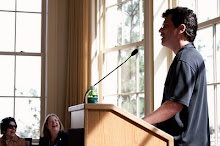What _two_ famous works of English literature, separated by about a century (I will call them Work #2 and Work #3), _both_ contain a female character who is connected to all three of the following textual elements:
Highbury; Richmond (where she is undone); and also the quotation “When lovely woman stoops to folly”?
Hint: the female character is named in Work #2, but is not named in Work #3.
Second Hint: you will probably need to use Google to ascertain the identity of the later work, unless you have a very good memory for cryptic poetry.
Third hint: There is a _third_ famous work of literature (Work #1), written about ¾ of a century prior to Work #2, which is explicitly alluded to in Work #2 (and also in another work by the author of Work #2), and which is also covertly alluded to in both the title and the literary style of Work #3.
I claim that this was the way the author of Work #3, in a riddling way, was giving conclusive evidence to a reader who might have noticed the parallelism of the above-listed three elements in Works 2 & 3, but was not sure if it was all just a very freakish coincidence. I.e., I am suggesting that the author of Work #3 was making clear an intention to allude to both Work #1 and Work #2, by flagging the explicit allusion in Work #2 to Work #1. That is the final “wink” that tells you it’s real and not Memorex.
Last hint: the title of this message points, indirectly, to all three of these Works: #1, 2 _and_ 3!
Once you figure out the identity of Works #1, 2 & 3, perhaps the more important question to answer is “What was the author of Work #3 trying to say, obliquely, about Works #1 &2?” The answer, vis a vis Work #$2, might be troubling to some reading this message.
Cheers, ARNIE
Popular Posts
- Deirdre Le Faye & Me: "I am a scholar, she is a scholar: so far we are equal"
- Darcy's "We neither of us perform to strangers": a Radical New Interpretation
- The Hunger Games’s Veiled Allusion to Shakespeare’s Titus Andronicus
- Rick Santorum would have been the worst person in the world to Jane Austen too!
- August Wayne Booth in Once Upon A Time: Jane Austen Really IS Everywhere in 2012!
- 20 shades of hero/villain Mr. Darcy
- Can Jane Austen forgive Marianne?
- Miss Bennet, Elizabeth, Lizzy, Eliza: who calls her what....and why
- The Great Gadsby: an overnight lesbian feminist ‘comedy’ sensation 10+ years in the making (& 3 millenia overdue)
- Austenland: The Movie was Fun, but the Novel was Better [SPOILER ALERT as to both]
Wednesday, August 3, 2011
Subscribe to:
Post Comments (Atom)

No comments:
Post a Comment